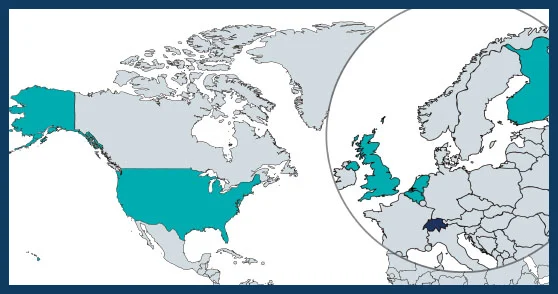12-2018 to 03-2022
€ 1,391,047
Silke Bauer
Silke.s.bauer@gmail.com
Swiss Ornithological Institute, Sempach, SWITZERLAND
Finish Meteorological Institute, Helsinki, FINLAND
Research Institute for Nature and Forest, Brussels, BELGIUM
University of Amsterdam, THE NETHERLANDS
University of Exeter, UNITED KINGDOM
Cornell Lab of Ornithology, Ithaca, USA

Trillions of migratory insects and birds, encompassing thousands of tons of animal biomass, move through the air within and across continents. Migrants are an important component of biodiversity and provide a multitude of services and disservices to human economy, agriculture and health. Over the past years, many of these migrant populations have alarmingly declined. The terrestrial and aerial habitats of these migrants have changed dramatically, particularly from human-driven land use alterations, increased urbanisation, massive extensions of artificial light and rapid climate change.
GloBAM aims at quantifying the magnitude, spatial extent and timing of aerial migrations, understanding their (functional) relations with environmental and socio-economic variables, and projecting the consequences of future socio-economic changes on migratory populations.
To achieve its aims, the project will:
• Retrieve biological information from (weather) radar networks;
• Quantify biomass flows of aerial migrants (birds and insects) in Europe and North America, and estimate the role of migrants in ecosystem functioning;
• Identify how these biomass flows are related to external variables, particularly weather and climate, along with habitat and land use characteristics including artificial light and wind energy installations;
• Develop scenarios for future changes in these variables and assess their consequences on the movements and population dynamics of aerial migrants.
This research addresses challenging and pressing biodiversity issues. Migratory animals are an integral component of biodiversity and have been declining at an alarming rate and international legislation often requires the conservation of migratory species. Identifying the response of migrants to climatic and land-use changes is fundamental for efficient conservation and mitigation of human-wildlife conflicts.
Therefore, the project will link to various stakeholders, from conservation practitioners and policy makers, to the wind energy sector and aviation safety, to assist in developing:
a) standard long-term and large-scale monitoring of aerial migrations;
b) policies regarding artificial light;
c) forecast models to support mitigation procedures for wind energy installations;
d) policies for conservation of crucial (aerial) habitat, core locations and time-periods that are essential for sustaining migratory populations.